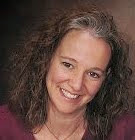Every year we food allergy parents spend quite a bit of time helping the new classroom teacher learn about allergies, and how to keep our allergic kiddo safe. Whether you are the first allergic student for the teacher, or the fifteenth, the education is the same. Why? Because in the world of food allergies everyone has a different comfort zone, different precautions, and different approaches to safety. So every food allergy parent has to be thankful for receptive teachers, and gently determine how much knowledge the teacher already has or may need to acquire.
To help you out, I have compiled a short list of things I give my teachers before school starts each year, to help everyone start a little closer to the same page.
1) How a child may describe an allergic reaction. This is important especially for younger kids who have not yet mastered the ability to recognize the beginning of a reaction, or know how to explain it.
2) Ten things kids with food allergies want you to know. This is a great way to offer a bit of insight to the teacher about what it is like to experience an allergy from a child's point of view. Teachers are generally compassionate, and this will help them to see more clearly how much impact allergies really have for children.
3) The Nut Allergy Handbook. This is a great 8 page handout created by Dr. Ham Pong for Allergic Living Magazine in 2008. It gives great information about nut allergies specifically, but can be generalized to any allergy. It explains anaphylaxis, cross contamination, the non-linear nature of food allergic reactions, how to recognize an allergic reaction, ingredients that indicate peanuts are present, on and on and on. A lot of information packed in, and I have no idea if Allergic Living still has this available! I could not find a link to it online, but they may be able to dig out a back issue upon request.
4) A food allergy action plan. This is a detailed plan that tells the teacher what steps to take when allergic symptoms are displayed. I always run copies on brightly colored paper so it is easy to find, and put a copy of a recent picture so that substitutes will easily identify my student. Your allergist may have one they prefer, and most will help you fill it out if you are uncertain of what instruction to give the teacher.
These are my must haves. Every year I end up adding a few extras. I also take the time to explain that sanitizer DOES NOT remove allergens. A better solution is washing hands, or wiping with baby wipes if hand washing is not practical. Have your teacher imagine doing an art project with glitter. Now, have that teacher imagine the effectiveness of giving each child a pump of sanitizer for clean up. Yep. She'll get it. Soap and water baby.
Make sure to find out how information is shared among staff, so that the cafeteria workers, gym, music, and art teachers are all aware of how to react to allergy symptoms.
Make sure to have an IHP (individualized health plan) or a 504 in place with your school. These can help make sure everyone is on the same page, and the guidelines for accommodating your child are in writing should there be a staff change, or confusion about what was agreed upon. These do not have to be combative plans! They are simply a tool to make sure everyone is clear about what processes to follow in order to maintain the safest learning environment for your student. Those, however, are an entire post unto themselves.
Saturday, August 20, 2011
Subscribe to:
Post Comments (Atom)

No comments:
Post a Comment
Always happy to hear from you, but please remember to play nice!